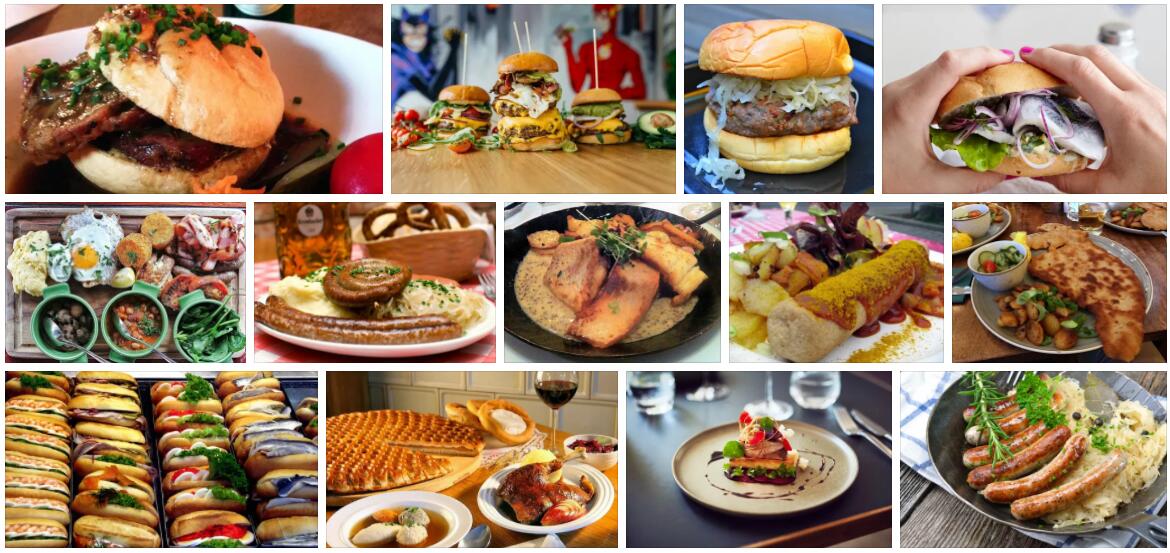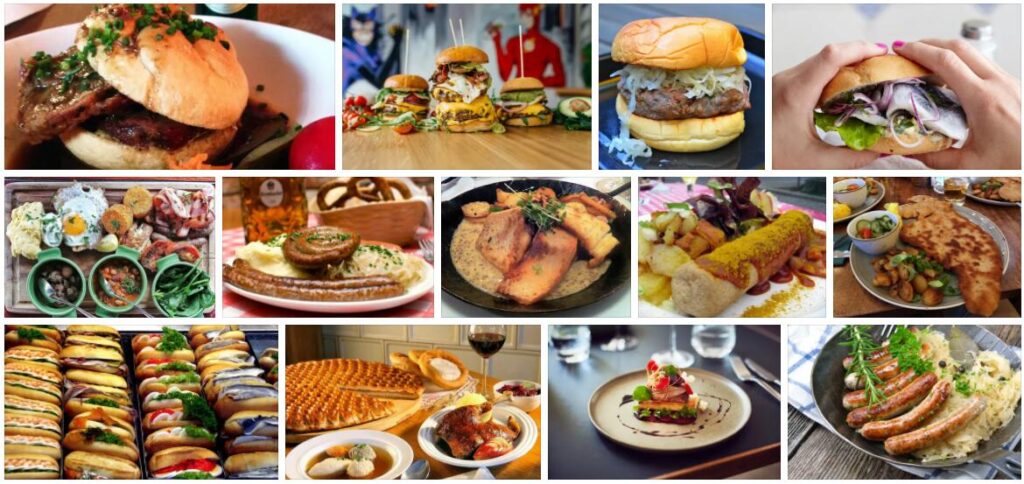Shopping and Eating in Hamburg, Germany
Hamburg is one of the largest cities in the country of Germany.
Shopping in Hamburg
For many, Hamburg defined by AbbreviationFinder may not be the first choice if one comes exclusively for shopping. When it comes to clothes and shoes, there is probably not much greater selection or lower prices than in the largest Nordic cities.
But of course you will find all the major chains like most other European cities. In addition, there are a number of small and exciting specialty shops you can visit.
In any case, Hamburg concludes that there are enough shopping malls, arcades, markets and warehouses to allow those shopping malls to spend a lot of time and money here too.
The best shopping streets in Hamburg
The main shopping areas are Europapassage, Spitalerstrasse, Jungfernstieg, Hanseviertel and Mönckebergstrasse, which extend from the Hauptbahnhof to the City Hall. Gänsemarkt is an indoor three-storey shopping street with glass roofs, where there are shops close by. Opening hours are 1000 to 2000 every day of the week except Sundays where it is closed.
Also try the Altemarkt Passage on Poststraße just off the Town Hall, with its many clothing stores. In the street Poststraße you will also find the Porsche Design store. Here you will find a number of products with the best Porsche design. We talk about clothes, sports articles, leather goods, suitcases, jewelery and lots of other things. Cheap? The answer is no.
Porsche Design is open from 1000 – 1900 every day except Saturdays where it closes one hour earlier and Sundays where it closes. The address is Poststraße 2. It is no more than a few hundred meters north of the City Hall in Altstadt.
For fashion enthusiasts in Hamburg
Those interested in fashion should take a closer look at the designer shops in the artist quarters Karoviertel and Schanzenviertel. This is also the hangout for many independent small shops and art galleries.
One of Hamburg’s oldest buildings is the Kaufmannshaus at Bleichenbrücke. This is now modernized and contains many interesting craft shops, galleries and cafes.
In the areas west and southwest of Binnenalster, the many pedestrian streets have been given new passages and arcades, where it is teeming with small shops and eateries. The absence of car traffic makes this a very pleasant neighborhood to stroll around in the afternoon.
If you are looking for something besides the mass produced, you should visit the Eppendorf area or the quarters around the university. Here are the small bookstores, wine shops, thrift stores, pubs and wine bars, craft shops, spice, tea and coffee houses.
Budapest Outlet
Shoes from Budapest are not cheap, but in their outlet shop located in Große Johannisstr. 9 you can make a bargain. Here are plenty of women’s and men’s shoes for the benefit of anyone with footwear. Große Johannisstrasse just off St Peters Church and Hamburg City Hall.
Markets in Hamburg
Hamburg has several outdoor markets. Most offer fresh vegetables, fruits, flowers, meat and fish. But by all means, there are plenty of options. Among other things, it is fun to catch up with the buzzing life of Hamburg’s 300-year-old Fish Market, which takes place at Landungsbrücke every Sunday morning from 0500. And despite the name, fish is not the main product here, you will also find used goods, CDs, jewelery, crafts, souvenirs and fruits.
Visit Harry’s Hafenbasar at Landungsbrücke, which is open every day except Mondays. Here you will find handicraft art from all over the world. NB! It costs a few ten kroner to get in. Open from 1000 to 1800.
General about shops in Hamburg
Most shops are open from 0900 to 1800 or 1900 on weekdays, often with long hours open until 2000 or later on Thursdays. Saturdays most stores close at 1400 or 1500, and Sundays are mostly closed.
Tax Free Shopping in Hamburg
Don’t forget that you pay VAT and that on all purchases over 25 euros you can get a refund of the VAT on departure.
Not all stores have a VAT refund scheme, so look for the Tax Free Shopping badge at the entrance to buy expensive products. Remember to bring a completed and stamped form and receipt.
Eating in Hamburg
Few dishes are as closely associated with a city as the hamburger is with Hamburg, although many of us may never have even thought about it.
The hamburger is said to have been named after a German immigrant from Hamburg who sold a dish of roasted, ground beef in New York in the 1850s. Customers named the dish after the chef and the chef’s hometown, and the name has remained ever since. The hamburger was really what the Germans called (and still call) a meatball, which in practice is a large and thick meat cake served with sauce, potatoes and vegetables.
But luckily you get more than hamburgers in Hamburg. The range of ethnic eateries is huge and you will find Indian, Chinese, Greek, Turkish, Persian, Vietnamese and Mexican restaurants in Hamburg. There are also no other German cities that have several eateries awarded with stars in the Michelin guide, which guarantees both quality and a significant contribution to the holiday budget.
The food culture in northern Germany is not particularly foreign to us Scandinavians, and is close to Danish cuisine.
Traditionally it is often sausages, stews with meat and vegetables, and naturally enough for a port city there is a lot of fish and seafood to get. The portions are usually large and filling. And even for vegetarians, there are several places where you can have a snack. Tassajara in Eppendorf Landstrasse 14 is one of several good vegetarian restaurants and has been around since 1976. Here you will find vegan food, vegetarian food, lactose-free food, and the place also has beer and wine. Read more about Vegetarian restaurants in Hamburg here.
Fischerhaus in Hamburg
From the seafood restaurants we will highlight Fischerhaus, a family run place where you can dine overlooking the Elbe. Exceptionally good selection in everything from eel or herring to salmon or lobster. Saturating positions at very affordable prices, and here you actually get child positions. The address is St Pauli Fischmarkt 14.
Cafe Paris
How about a visit to a quality bistro with French ancestry in the middle of beautiful Hamburg? Cafe Paris in Rathausstraße 4 (Altstadt) is a place you only have to go with if you are lucky enough to get a table. Open from 0900 to 2330 all day. Good lunch and dinner with a variety of dishes. Great value for money at Cafe Paris.
Trattoria da Enzo
If you make the trip to Wexstraße 34 west of Stadthausbrücke and not too far from Altstadt you come to a restaurant that oozes charm and atmosphere. Popular prices too. Here you get the best of what is known in Italy and Germany. Open daily until 11 pm, except Sundays where it is closed. Great feedback and an interior that keeps the whole family going.
Germany has a vibrant pub culture, and most pubs and beer pubs also serve food. Many people enjoy The Irish Rover in Grossneumarkt, which markets itself as a small piece of Ireland in Hamburg, and it feels that way too. Here you can both stop in for a filling lunch or to have fun in the evening for live music.
It is also not dangerous to stroll around the Reperbahn or have a beer or three as long as you behave normally. There are pubs, bars and more. And a snack you can get at very reasonable prices.
If you visit the Groser Freiheit cross street you are in the “Beatles Street”. Go for example. “all the way” to Indra Club 64 and visit a club that oozes history and which many tourists overlook. NB! Indra Club 64 rarely opens early.
Drink in Hamburg
With the exception of the Irish and the Czechs, no one drinks more beer than the Germans, and the beer is a natural part of daily life and culture. Like the English, it is quite common and socially acceptable for the Germans to pop in a beer bar for a couple of beers after work, whatever the day of the week.
Germany has nearly 1400 different breweries, more than any other country except the United States. The most popular is the light pilsner beer, but here also countless other types of beer are produced, from the silky weiss beer to the dark beech. The beer in Germany is usually a few per cent stronger than the Norwegian one at 4.5%.
It does not breed from vineyards in the Hamburg district, but at Lübeck, wine has long been produced from grapes picked and pressed in France, and then shipped in wooden barrels to Lübeck. Interested parties should try the local specialty Rotspon, and visit the wine connoisseurs von Melle in B eckergrube 86 in Lübeck, where you can test over 350 different types of wine.






